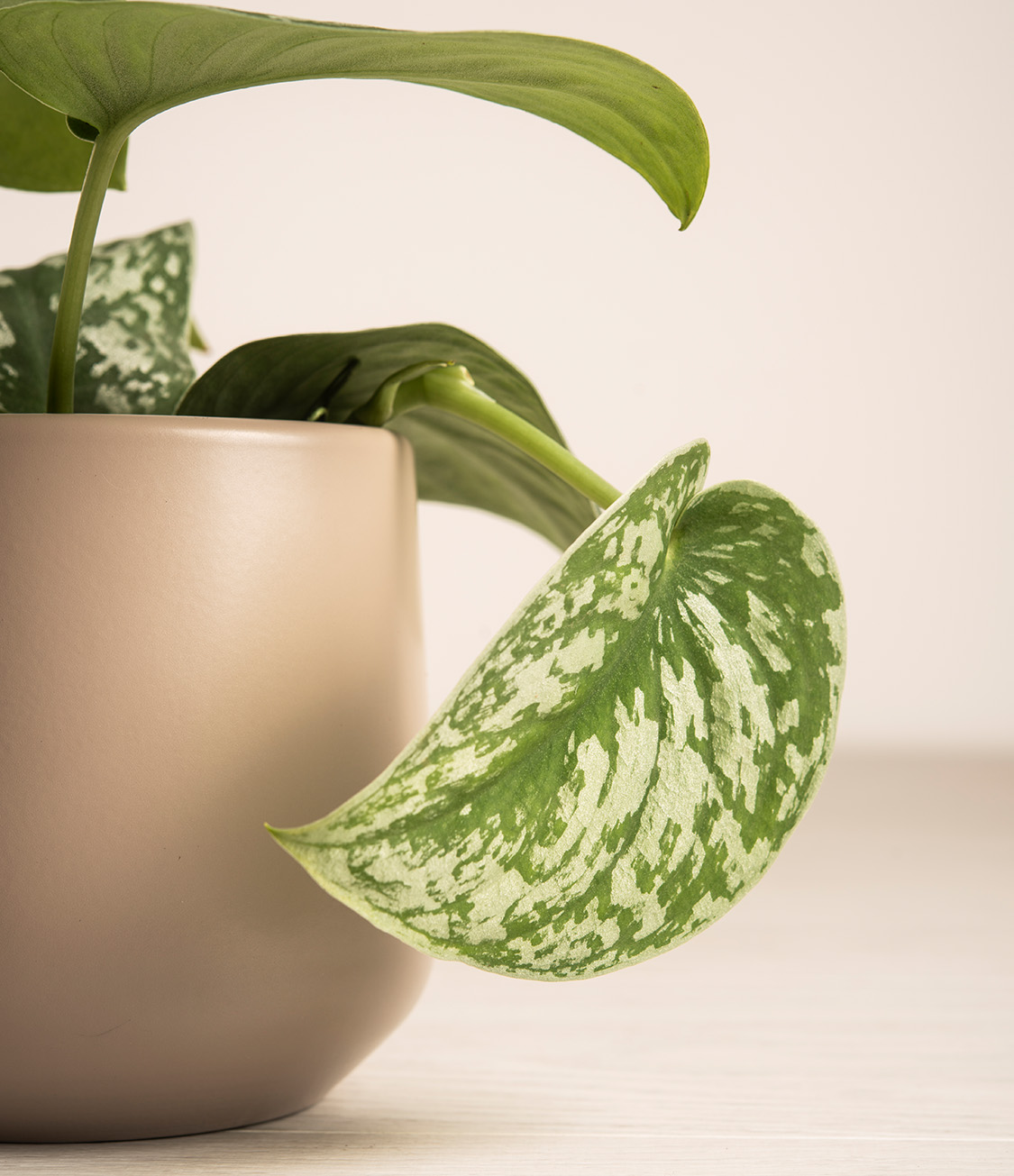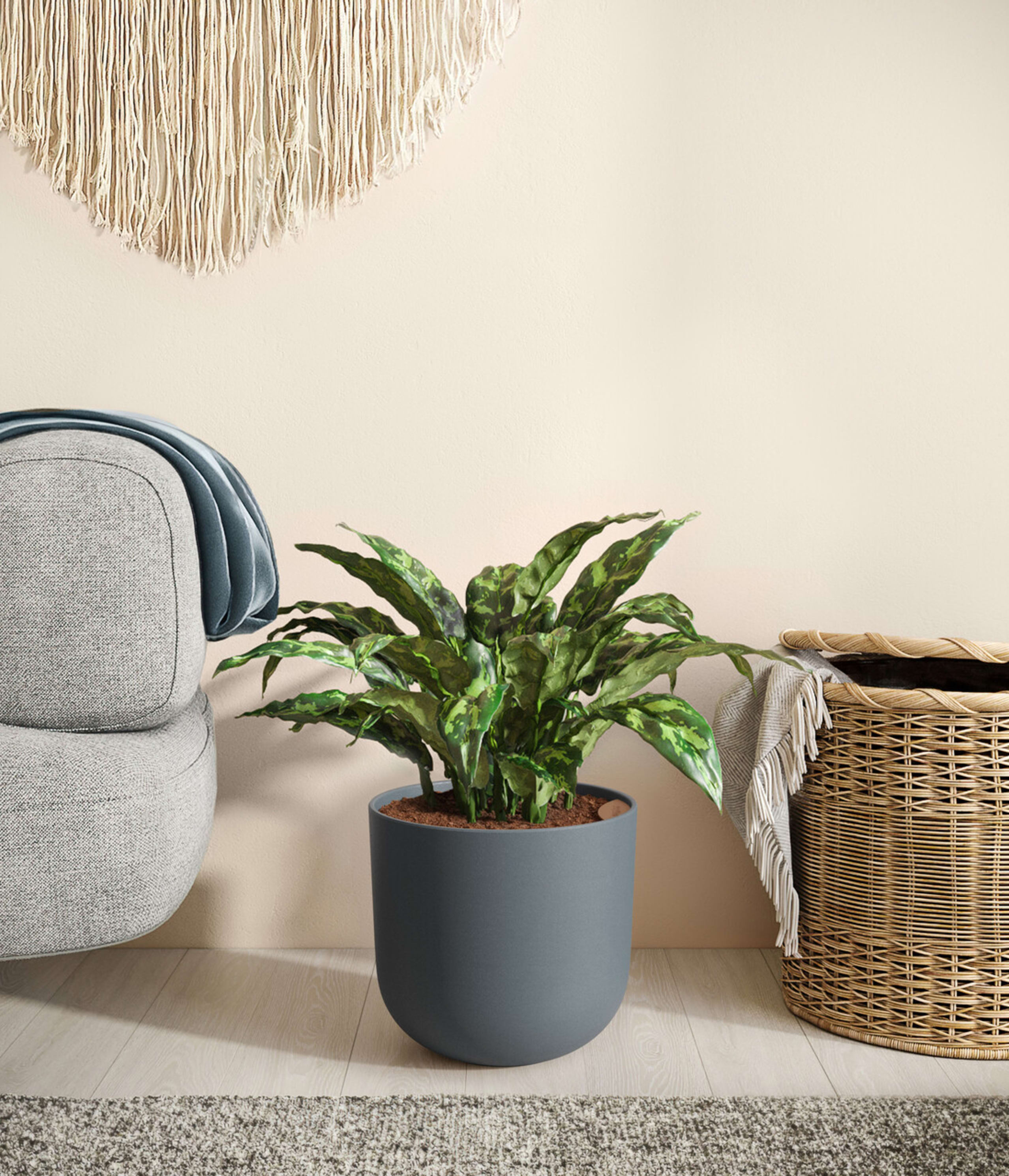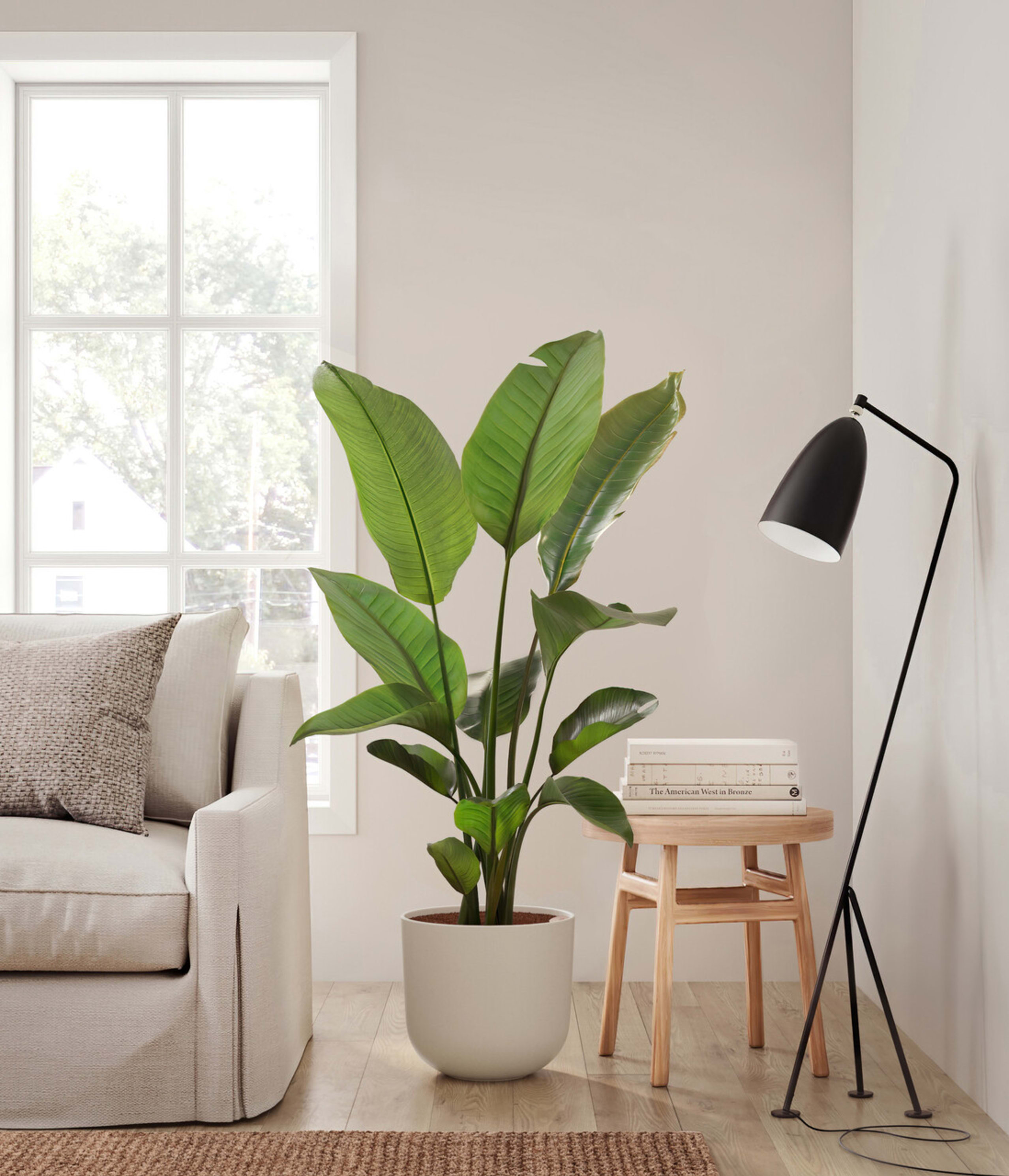Plant care library / Silver Pothos
How to care for Silver Pothos
About Silver Pothos
Our love for this natural trailer is as ancient as love itself, earning it the name Pothos - the god of love, who was named after the Greek word for ‘yearning’ and symbolized carrying a vine stretching as far and wide as the heart’s desire.
Hailing from the Pacific Islands, Silver Pothos is known for its admirable resilience and graceful vines and wears forest green foliage in hues of sage that brings peace to its beholds.
Other common names
- Silver Satin Pothos
- Devil's Ivy
- Satin pothos
- Scindapsus pictus (scientific name)
- silver vine
How Often Should I Water My Silver Pothos?
With easyplant, watering your Silver Pothos is simple. Make sure to check the easyplant reservoir once a month and fill it when empty, and you're all set!
If you don’t have an easyplant, you should water your Pothos every 1-2 weeks, allowing the soil to dry out between waterings. The amount of sunlight determines how often you should water; more sunshine requires frequent watering, whereas low-light conditions require less hydration. As a rule of thumb, wait until the top 50-75% of the soil is dry and check if its leaves begin to wilt - that's an indication that they need water! When it comes to the best watering methods, Pothos thrive with self-watering systems and bottom-watering methods.
Silver Pothos Light Needs
Silver Pothos grows best in a well lit space with bright direct or indirect sunlight, and can adapt to spaces with medium to low light, where the source of light is further away. Avoid placing it in spaces without natural sunlight.
An East or West-facing window with bright indirect sunlight is ideal for your plant for optimal growth. Be mindful that direct sun rays may scorch the leaves and cause harm. Light conditions should be checked regularly; if necessary, your plant can be moved to a different spot for better lighting.
Silver Pothos Plant Care
One or two leaves might fall or turn yellow during your Silver Pothos' first few days at home. This is a normal part of adjustment and no cause for concern. Once adjusted, Silver Pothos is easy to care for and will reward your love for it by quickly bouncing back from any mishap. To help it grow optimally and evenly, occasionally dust the leaves and rotate the pot by a ¼ turn once a month.
How Big Do Silver Pothos Plants Grow?
Silver Pothos is a natural trailer that will grow long and can eventually be hung across a wall or stretched down a high shelf. When fully matured, the heart-shaped foliage of these plants can reach up to 1 foot in size. Still, if grown as a houseplant, they remain in their juvenile stage for years.
The Silver Satin Pothos is an amazing houseplant that can reach up to 10 feet in its natural environment. When grown indoors as a potted plant, it may take several years for your plant to reach 3 feet in length, the common stopping point for these plants when grown indoors.
To ensure your Silver Satin Pothos thrives, giving it the right amount of sunshine is important. Partial shade and bright, indirect light will do wonders for this plant - its large leaves can even grow as big as your hand! Ensure you provide ideal temperature conditions and adequate nutrients to keep your Silver Pothos happy.
Temperature & Humidity
With high humidity and temperatures between 70-90°F, the Silver Pothos flourishes in filtered light - but beware not to expose it to too much direct sunlight! This houseplant will be happy with an average home temperature of 65°F-75°F, but to ensure optimal health, ensure it is never exposed to temperatures below 60 ° F.
The silver pothos is a hardy plant, requiring neither high humidity nor dry air to grow. For it to remain healthy and vibrant, however, the ideal 40-50% relative humidity level should be maintained; otherwise, its leaves will begin turning brown. Thankfully achieving this desired range isn't difficult in an average household environment!
Are Silver Pothos Toxic for Pets & Kids?
Silver Pothos may be moderately toxic if ingested, so be sure to keep away from curious children and pets. In humans, ingesting needle-like calcium oxalate crystals found in all parts of this plant can cause instant pain or a burning sensation, as well as swelling of the lips, mouth, tongue, and throat. Additionally, contact with the sap may further result in dermatitis and eye irritation.
Silver Pothos are dangerous to humans and can be fatal for pets. When ingested, the calcium oxalates present in these plants can cause intense gastrointestinal distress and other severe health issues that may even result in death.
If a cat consumes this plant, it may become withdrawn and attempt to hide due to symptoms like salivating excessively, losing appetite, throwing up, and pawing at its mouth. Similarly, dogs can suffer from agonizing pain, swallowing difficulties, vomiting, saliva overproduction, and swelling. If you notice any of these symptoms, contact your vet immediately.
Troubleshooting Common Problems with Silver Pothos
If you notice multiple leaves are turning pale or yellow, relocate the pot to a less brightly lit area. Overwatering can cause leaves to appear soggy, withered, and even decayed. Yellowed foliage with crispy brown spots may be an indication of underwatering. Scanning the soil moisture regularly while discarding any damaged yellow leaves as soon as possible is recommended.
Pests can be an unsightly and devastating problem for Silver Satin Pothos. Spider mites and scales are among the most common offenders. The best way to identify spider mites is by looking out for their distinctive silky webs on the stems of your plant; meanwhile, scales may be more subtle in appearance yet still cause harm if not addressed promptly.
To identify scales on plants, look for small, hard, raised bumps on the stems, leaves, or branches. These bumps may be brown, gray, or black in color and may appear to be stuck to the plant surface. They can also appear as small, discolored, or yellowish spots on leaves. It's important to check the undersides of leaves, as scales often congregate there.
Keep in mind that scales can be mistaken for other pests or plant diseases, so it's always best to consult with a plant expert for proper identification and treatment.
Frequently Asked Questions about Silver Pothos Plant
- Should I mist Silver Pothos?Be mindful when misting this plant with water, as its velvety leaves can easily trap too much moisture and make it vulnerable to fungal diseases. To maintain the desired indoor humidity levels, use a humidifier, and place it in a humid room or near a pebble tray with water instead of misting it directly.
- Do Silver Pothos need light?Silver Pothos prefer bright, indirect light and thrive in a well-lit area. Avoid too much direct sunlight as this can cause burning of the plant’s leaves. Silver Pothos can handle medium-low light areas but shouldn't be placed in an area without natural light.
- How do you care for Silver Pothos?Caring for your Silver Pothos is simple. Place it in a well-lit area, and avoid direct sunlight. Ensure the temperature remains steady at around 70°F – 90°F and maintain an ideal humidity level of 40-50% to ensure optimal health. When watering, ensure not to overwater as it may cause root rot. A good rule of thumb is to check 2” into the soil using your finger or a stick. If the soil is still moist, wait a few days and let it dry before watering.
- How often should I water my Silver Pothos?Silver Pothos should be watered every 1-2 weeks, depending on the season. With a self-watering system like the easyplant self-watering pot, you can prevent over- or under-watering and ensure your plant is never thirsty.

 Small Plants
Small Plants Medium Plants
Medium Plants Plants Collections
Plants Collections Large Plants
Large Plants Huge Plants
Huge Plants